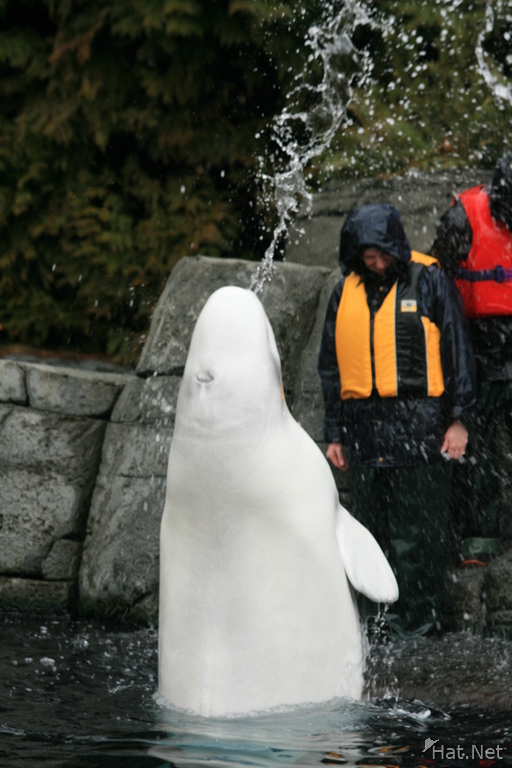beluga pumping water, aquarium
In the spring beluga move to their summer grounds, bays, estuaries and other shallow inlets. These summer sites are detached from one another and a mother will usually return to the same site year after year. As their summer homes become clogged with ice during autumn, beluga move away for winter. Most travel in the direction of the advancing ice-pack and stay close to the edge of it for the winter months. Others stay under the iced area - surviving by finding ice leads and polynyas (patches of open water in the ice) in which they can surface to breathe. Beluga may also find pockets of air trapped under the ice. The remarkable ability of the beluga to find the thin slivers of open water where the dense ice pack may cover more than 95% of the sea surface is still a source of mystery and great interest to scientists. It is clear that the echo-location capabilities of the beluga are highly adapted to the peculiar acoustics of the sub-ice sea and it has been suggested that beluga can sense open water through echo-location.
| Date | 2008:02:10 11:13:06 | Make | Canon |
|---|---|---|---|
| Model | Canon EOS DIGITAL REBEL XTi | Width | 2592 |
| Height | 3888 | Flash | Off, Did not fire |
| Focal | 165.0 mm | Exposure | 1/160 |
| F Number | 5.6 | ISO | 400 |
| White Bal. | Manual | Metering | Multi-segment |
| Program | Aperture-priority AE | Compensation | 0 |
| Hyperfocal | 261.86 m | Latitude | 49.3008333333333 |
| Longitude | -123.131333333333 | Altitude | 30479.69531 m |
| File Size | 3.2 MB | ||

